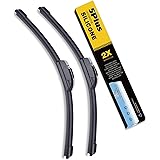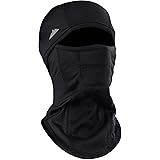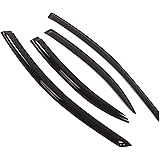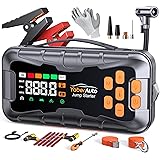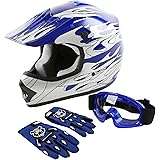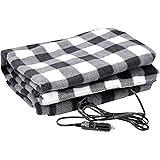Table of Contents
Do you know how your tire size affects your car’s performance and safety? Picking the right tire size is key. It changes how your car handles, its efficiency, and safety features.
Choosing between 215 and 235 tires depends on several things. These include your car’s needs, the driving conditions, and what you prefer. Knowing these differences helps you make a smart choice.
In a tire size comparison, size isn’t everything. It’s about how it changes your driving experience.
Key Takeaways
- Vehicle compatibility is a crucial factor in choosing between 215 and 235 tires.
- Driving conditions significantly influence the decision on tire size.
- Personal preference plays a role in selecting the appropriate tire size.
- Tire size affects vehicle performance and fuel economy.
- Safety is also a consideration when deciding on tire size.
Understanding Tire Size Notation
Knowing the numbers and letters on your tire’s sidewall is key to picking the right tires. The numbers, like 215 or 235, show the tire’s width in millimeters. But there’s more to tire size notation than just the width.
What the Numbers Mean
Tire size notation combines numbers and letters to give important info about the tire’s size. The first number, like 215, shows the tire’s width in millimeters. For example, “215/60R17” means the tire is 215 millimeters wide.
The next number, 60, is the aspect ratio. It shows the tire’s height compared to its width. The letter “R” means the tire is radial. And “17” is the rim diameter in inches.
Understanding these numbers is vital because they affect your vehicle’s performance, handling, and fuel efficiency. The tire width, for instance, impacts how the tire touches the road. This affects traction and handling.
The Importance of Tire Dimensions
Tire dimensions are crucial for your vehicle’s performance and safety. The right tire size ensures a proper fit. This is key for maintaining the vehicle’s designed handling and safety features.
Incorrect tire sizes can cause reduced traction, uneven tire wear, and compromised safety. Also, tire dimensions affect your vehicle’s speedometer and odometer readings. A change in tire size can lead to inaccurate readings, which might have legal and practical issues.
215 vs 235 Tires: How Do They Differ
When comparing 215 vs 235 tires, the most notable difference is their width. 235 tires are 20 millimeters wider. This difference affects their dimensions and performance.
Width Difference Explained
The width of a tire is key for its road contact. A wider tire like the 235 has a bigger contact patch than a narrower tire like the 215. This can improve traction and handling, but it might also increase rolling resistance.
This means a wider tire could use more fuel. The 20 mm difference in width can change how a vehicle performs. For example, a wider tire might give better grip on dry roads, making the vehicle more stable and responsive.
Impact on Overall Tire Dimensions
The width difference also affects a tire’s dimensions. Wider tires have a larger diameter and circumference. This can make the speedometer read slower than the actual speed.
Also, the dimensions of a tire impact its sidewall height and profile. Even with the same aspect ratio, wider tires might have different sidewall heights. This can change the tire’s flexibility and ride comfort. Lower sidewalls generally provide less flexibility and might make the ride harsher.
Comprehensive Tire Size Comparison Chart
Choosing between 215 and 235 tires can greatly affect your car’s performance. A detailed comparison chart can help you see the differences. We’ll look at the dimensions of both tire sizes to guide your choice.
Dimensional Specifications
When comparing 215 and 235 tires, several key dimensions are important. These include the tire width, aspect ratio, and overall diameter. The table below shows these specifications:
| Tire Size | Width (mm) | Aspect Ratio | Diameter (inches) |
|---|---|---|---|
| 215 | 215 | Various (e.g., 65, 70) | Typically around 26-27 |
| 235 | 235 | Various (e.g., 65, 70) | Typically around 27-28 |
The main difference is in the width and possibly the diameter, based on the aspect ratio. A wider tire like the 235 offers a larger contact patch. This can improve traction and handling.
Visual Comparison
A visual comparison helps drivers see the physical differences between 215 and 235 tires. It makes choosing the right size for your vehicle and driving needs easier.
Key things to consider include:
- Tire width and its impact on handling
- Aspect ratio and its effect on ride comfort
- Overall diameter and its influence on speedometer readings
By looking at these factors and using a comprehensive tire size comparison chart, you can make a better choice between 215 and 235 tires.
Performance Implications of Wider Tires
Choosing the right tire size is key. Wider tires, like 235 tires, have different performance than narrower ones, such as 215 tires.
Traction and Grip Differences
Wider tires give better traction and grip on dry roads. They have a bigger contact patch with the road. This helps the vehicle to accelerate, brake, and corner better. Drivers who love spirited driving or track events will find this very beneficial.
Cornering and Stability
But, wider tires can affect cornering and stability. They grip better in corners but might hydroplane on wet roads. Drivers need to adjust their driving based on the tire size and road conditions.
Wider tires also change how a vehicle handles at high speeds. They make the vehicle feel more stable but also more sensitive to steering. Drivers should know these traits to get the most out of wider tires.
Fuel Economy Considerations
Choosing between 215 and 235 tires affects your vehicle’s fuel use. The size of your tires impacts fuel economy, mainly because of rolling resistance.
Rolling Resistance Comparison
Rolling resistance is key to a tire’s fuel efficiency. Narrower tires, like 215s, usually save more fuel because they have less rolling resistance. This is because they have a smaller contact patch with the road, leading to less friction and energy loss.
Rolling Resistance Impact: The difference in rolling resistance between 215 and 235 tires affects fuel use. Studies show a 5% improvement in fuel efficiency with lower rolling resistance.
Long-term Fuel Consumption Impact
The fuel consumption difference between 215 and 235 tires adds up over time. Let’s look at a comparison of fuel consumption for both sizes over a year.
| Tire Size | Estimated Annual Fuel Consumption (gallons) | Fuel Economy (mpg) |
|---|---|---|
| 215 | 500 | 30 |
| 235 | 520 | 28 |
The table shows 215 tires might offer better fuel economy than 235 tires. But, the actual fuel savings depend on many factors, like driving habits and road conditions.
In summary, 215 tires might save a bit more fuel than 235 tires due to lower rolling resistance. But, it’s important to consider other performance factors before making a choice.
Handling Characteristics: 215 vs 235
The handling of 215 and 235 tires differs, affecting steering and how easy they are to maneuver. Knowing how these sizes impact your vehicle’s handling is key when deciding.
Steering Response Differences
The size of your tires greatly affects how your car steers. 235 tires usually have better steering response because they have a wider contact patch. This means they grip the road better. On the other hand, 215 tires still steer well but might not be as precise as 235 tires.
When you compare steering response, 235 tires offer a more direct and quick driving feel. This is true, mainly when cornering or making sharp turns.
| Tire Size | Steering Response | Maneuverability |
|---|---|---|
| 215 | Good | Suitable for standard driving conditions |
| 235 | Excellent | Enhanced performance during cornering and sharp turns |
Maneuverability in Various Conditions
Maneuverability is also important in a vehicle’s handling. 235 tires are more maneuverable in dry conditions because of their wider contact patch. This improves grip and stability. But in snowy or icy conditions, 215 tires might be better because they are lighter and have lower speed ratings. This makes them more forgiving to handle.
In summary, choosing between 215 and 235 tires depends on your typical driving conditions and what you prefer in handling and maneuverability.
Weather Performance Comparison
The performance of 215 and 235 tires changes a lot in different weather. This affects how safe and easy to handle they are. It’s key to think about how they do in various weather conditions when picking between them.
Wet Weather Traction
How well tires grip in the wet is very important. Wider tires like 235 usually do better because they have a bigger contact patch. But, the real difference can also depend on the tire’s design and material.
Comparing 215 and 235 tires in the wet shows 235 tires have a slight advantage, mainly at high speeds. Their wider surface helps spread water better, lowering the chance of slipping.
Snow and Ice Performance
The difference in snowy and icy conditions between 215 and 235 tires is not always clear. While wider tires might offer more grip sometimes, it’s not always true. The design of the tread, including sipes and depth, matters more than just the width.
Some research says narrower tires, like 215, might do better in deep snow because they press harder on the ground, improving grip. But on ice, the difference is small, and other things like the tire’s material and studs (if any) matter more.
| Tire Size | Wet Traction | Snow Traction | Ice Traction |
|---|---|---|---|
| 215 | Good | Excellent | Fair |
| 235 | Excellent | Good | Fair |
Hot Weather Considerations
In hot weather, how well tires perform is mostly about their material and how they handle heat. Wider tires like 235 might get hotter because of their bigger contact patch and higher friction. But, new tire tech has made these issues less of a problem.
Many 235 tires are now made to handle high temperatures well. The important thing is to make sure the tire fits the vehicle’s speed and load needs.
Choosing between 215 and 235 tires in hot weather should be based on the tire model’s features and the vehicle’s details.
Ride Comfort and Noise Levels
Choosing between 215 and 235 tires affects ride comfort and noise. The tire’s width greatly influences your driving experience. It impacts both the ride’s comfort and the noise it makes.
Impact on Ride Quality
The ride quality depends on how well the tire absorbs road bumps. Narrower tires like the 215 size tend to offer a smoother ride. They have less contact with the road, leading to less vibration and discomfort for passengers.
Wider tires such as the 235 size might give a slightly harsher ride. This is because they have more contact with the road. But, other factors like tire construction and the vehicle’s suspension also play a role.
Noise Generation Differences
Noise levels differ between 215 and 235 tires. Narrower tires tend to generate less noise. They make less road contact noise, which means less humming or droning sounds, even at high speeds.
- The 215 tires are generally quieter due to their smaller contact patch.
- The 235 tires, while potentially noisier, can offer better performance in certain conditions. This might offset the increased noise level for some drivers.
Choosing between 215 and 235 tires depends on what you value most. If you want a quieter, more comfortable ride, go for the 215 size. If you need better handling and traction, even if it means a noisier ride, choose the 235 size.
Vehicle Compatibility Considerations
Choosing the right tire size, like 215 or 235, is key for your vehicle’s performance. You need to check two important things: rim width and clearance.
Rim Width Requirements
The width of your vehicle’s wheel rims is crucial. Tire makers give a recommended rim width for each tire size to ensure a good fit. For 215 and 235 tires, always check your vehicle’s manual or the manufacturer’s website for the right rim width.
| Tire Size | Recommended Rim Width |
|---|---|
| 215 | 6.0 – 7.5 inches |
| 235 | 7.0 – 8.5 inches |
Using the wrong rim width can cause handling issues, uneven wear, and even tire failure. As
“The rim width affects the tire’s profile and contact patch, influencing the vehicle’s overall handling and stability.”
– a tire industry report shows why the right rim width is so important.
Clearance Issues to Watch For
Another key factor is avoiding clearance problems. Clearance issues can happen if the tire is too wide or has too much sidewall bulge, rubbing against the fender or suspension. Wider tires, like 235, are more likely to cause clearance problems, mainly on vehicles not made for wider tires.
To prevent clearance issues, check your vehicle’s fender and suspension. Talking to a tire expert or looking at the manufacturer’s guidelines can help you know if a tire size will fit without clearance problems.
Cost Analysis: 215 vs 235 Tires
When looking at 215 vs 235 tires, cost is a key factor. The choice can affect your wallet, from the first purchase to ongoing expenses.
Initial Purchase Price Differences
The cost of 215 and 235 tires differs, with 235 tires usually pricier. This is because they need more material for their wider size. Prices can vary from $20 to $50 per tire, based on brand, model, and quality.
“The wider the tire, the higher the cost,” many say in the car world. This is because wider tires need more rubber and advanced tech to handle their size and load.
Long-term Ownership Costs
Long-term costs include fuel, maintenance, and tire lifespan. While 235 tires cost more upfront, they can save on fuel. Wider tires, though, have higher rolling resistance, which can lower fuel economy.
- Fuel consumption: Wider tires can increase fuel consumption by up to 3% due to higher rolling resistance.
- Maintenance: The cost of maintaining wider tires might be higher due to the need for more frequent rotations and potential for uneven wear.
- Lifespan: The lifespan of 215 vs 235 tires can vary, with some wider tires offering longer tread life due to advanced tire technology.
In summary, while 235 tires cost more at first, their long-term costs are worth considering. A full cost analysis should look at both the initial price and ongoing expenses for each tire size.
Tire Lifespan and Wear Patterns
Choosing between 215 and 235 tires means looking at their lifespan and wear patterns. These factors greatly affect your car’s performance and upkeep costs.
Expected Mileage Comparison
The mileage of 215 and 235 tires depends on driving habits, road conditions, and maintenance. Proper maintenance can help both tire sizes last longer. But, 235 tires might wear out faster because of their bigger contact area with the road.
On average, 215 tires can last 60,000 to 80,000 miles with good care. 235 tires might last a bit less, from 55,000 to 75,000 miles. Keeping tire pressure right, rotating tires, and avoiding harsh driving helps extend their life.
Common Wear Issues
Both 215 and 235 tires face common wear problems if not cared for. Uneven wear can happen from bad wheel alignment, not rotating tires enough, or wrong tire pressure. 235 tires might get edge wear if not aligned right or if the car’s suspension is old.
Regular checks and upkeep can spot and fix these issues early. It’s key to look at the tire’s build and tread pattern when checking for wear.
Vehicle Speedometer and Odometer Effects
Switching from 215 to 235 tires can affect your car’s speedometer and odometer. Changing the tire size changes the wheel’s circumference. This can cause the speedometer and odometer to show wrong readings.
The speedometer and odometer are set for the standard tire size. Changing to 215 to 235 tires messes up this setting. This means the speedometer might show a different speed than your car is actually going.
Calibration Concerns
Changing tire sizes can mess with your car’s computer. This is because the computer is set for a specific tire size. When you change the tires, the speedometer and odometer might not work right.
For example, going from 215 to 235 tires might make your speedometer show a lower speed. Going the other way could make it show a higher speed. This can be a problem, like when you’re racing or driving in heavy traffic.
Legal and Safety Implications
Having a wrong speedometer or odometer can lead to legal trouble. If you’re speeding but your speedometer says you’re not, you could get in trouble.
Also, a wrong odometer reading can hurt your car’s resale value. It can also mess up when you need to do maintenance, since maintenance is often based on mileage.
To avoid these problems, you should get your speedometer and odometer recalibrated when you change tires. You might need to see a mechanic or the car’s maker to figure out how to do this. Sometimes, updating the car’s software or using a correction factor can help get the readings right.
In short, changing tire sizes can have big effects on your car’s speedometer and odometer. It’s important to understand these effects and fix any calibration issues. This keeps your car safe, legal, and running well.
When to Choose 215 Tires
Choosing between 215 and 235 tires depends on your vehicle and how you drive. It’s important to know these factors to make the right choice.
Ideal Vehicle Types
215 tires fit well with smaller cars like compact models and sedans. These vehicles need tires that balance traction and fuel savings.
Vehicle types that benefit from 215 tires include:
- Compact cars
- Sedans
- Smaller crossovers
Driving Conditions Best Suited For
Driving conditions affect the best tire size. 215 tires work best for city and highway driving at moderate speeds.
Driving conditions suitable for 215 tires:
- Urban driving
- Highway cruising
- Mild weather conditions
Performance Benefits
Choosing 215 tires can improve your car’s fuel economy and reduce rolling resistance. These benefits are great for cars made for efficiency.
| Performance Aspect | Benefits of 215 Tires |
|---|---|
| Fuel Economy | Improved fuel efficiency due to lower rolling resistance |
| Handling | Sufficient traction for everyday driving needs |
| Cost | Generally more affordable than wider tire options |
When to Choose 235 Tires
235 tires offer many benefits over narrower sizes. They are great for certain driving conditions and vehicle types. If you want better performance and traction, 235 tires might be the best choice for you.
Recommended Vehicle Applications
235 tires are perfect for vehicles needing a mix of on-road comfort and off-road strength. SUVs and light trucks often use these tires. They handle different terrains well.
Vehicle Types:
- SUVs
- Light Trucks
- Performance Cars
Optimal Driving Scenarios
235 tires have a wider contact patch. This gives better grip on dry and wet roads. They’re great for drivers facing tough road conditions.
Driving Conditions:
- Wet or slippery roads
- High-performance driving
- Moderate off-road use
Performance Advantages
235 tires offer a smoother ride and better handling. Their wider size also helps with heat dissipation. This can lead to longer tire life in some cases.
| Performance Aspect | 215 Tires | 235 Tires |
|---|---|---|
| Traction | Good | Excellent |
| Handling | Responsive | Very Responsive |
| Ride Comfort | Comfortable | Very Comfortable |
Choosing 235 tires depends on your vehicle and driving habits. Make sure they match for the best performance and safety.
Professional Recommendations and Expert Opinions
Mechanics and automotive engineers give key advice on picking the right tire size. They help car owners decide between 215 and 235 tires.
What Mechanics Suggest
Mechanics suggest looking at the car’s original tire size and how you drive. For example, if a car comes with 215 tires, switching to 235 might need changes to the suspension or wheel wells. This is to avoid any clearance problems.
Key considerations include:
- Vehicle compatibility
- Driving habits
- Load capacity
Automotive Engineer Perspectives
Automotive engineers stress the need to match tire size with the car’s design. They say wider tires like 235 can improve traction and handling. But, they might also raise rolling resistance, which could lower fuel efficiency.

Comparing the two tire sizes can show their pros and cons. Here’s a table that highlights the main differences:
| Tire Size | Width | Aspect Ratio | Rim Diameter |
|---|---|---|---|
| 215/60R17 | 215 mm | 60% | 17 inches |
| 235/55R18 | 235 mm | 55% | 18 inches |
Choosing between 215 and 235 tires should be based on expert advice, your driving needs, and the car’s specific needs.
Conclusion
Choosing between 215 and 235 tires depends on several key factors. These include your vehicle, driving conditions, and personal preferences. We’ve looked at the differences in size, performance, and other important points.
While 215 tires might save fuel and fit some cars better, 235 tires offer better grip and stability. This is true, mainly when cornering. So, picking the right size depends on your car and how you drive.
Knowing the differences helps you choose the best tire for you. Whether you want to save fuel or improve handling, picking the right size is key. It ensures your car performs well and safely.


